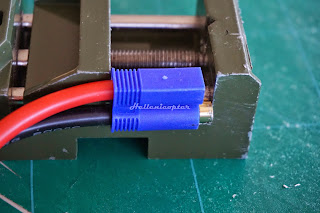Quick release system for my customized mUVe 3D printer
OK, since I have been building a lot of parts for my heli using the customized mUVe3D DLP printer it deserves some time spent to show you a new idea I have for a quick release system of the building plate.
I have taken apart a Hama photo tripod "Traveller Duo 170" in order to use its head for the quick release system. After making some changes to the head (replacing the tightening screws/levers by short screws) and attaching it to the horizontal bar of the mUVe3D z-axis the system is ready to be tested. In fact, it is very useful to have full control of the tilt and swivel angles of the plate using the tripod head in order to fine tune the position of the plate.
Below you can find some photos. Once I test the system to build some parts I will post more photos.
Cheers,
Hellenicopter




































